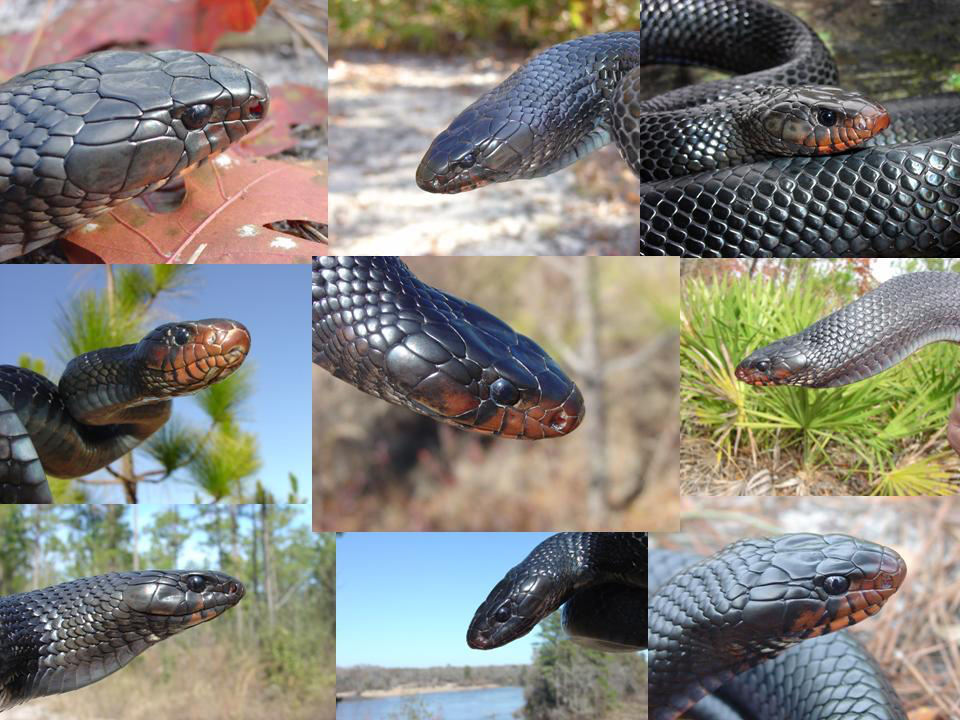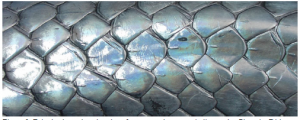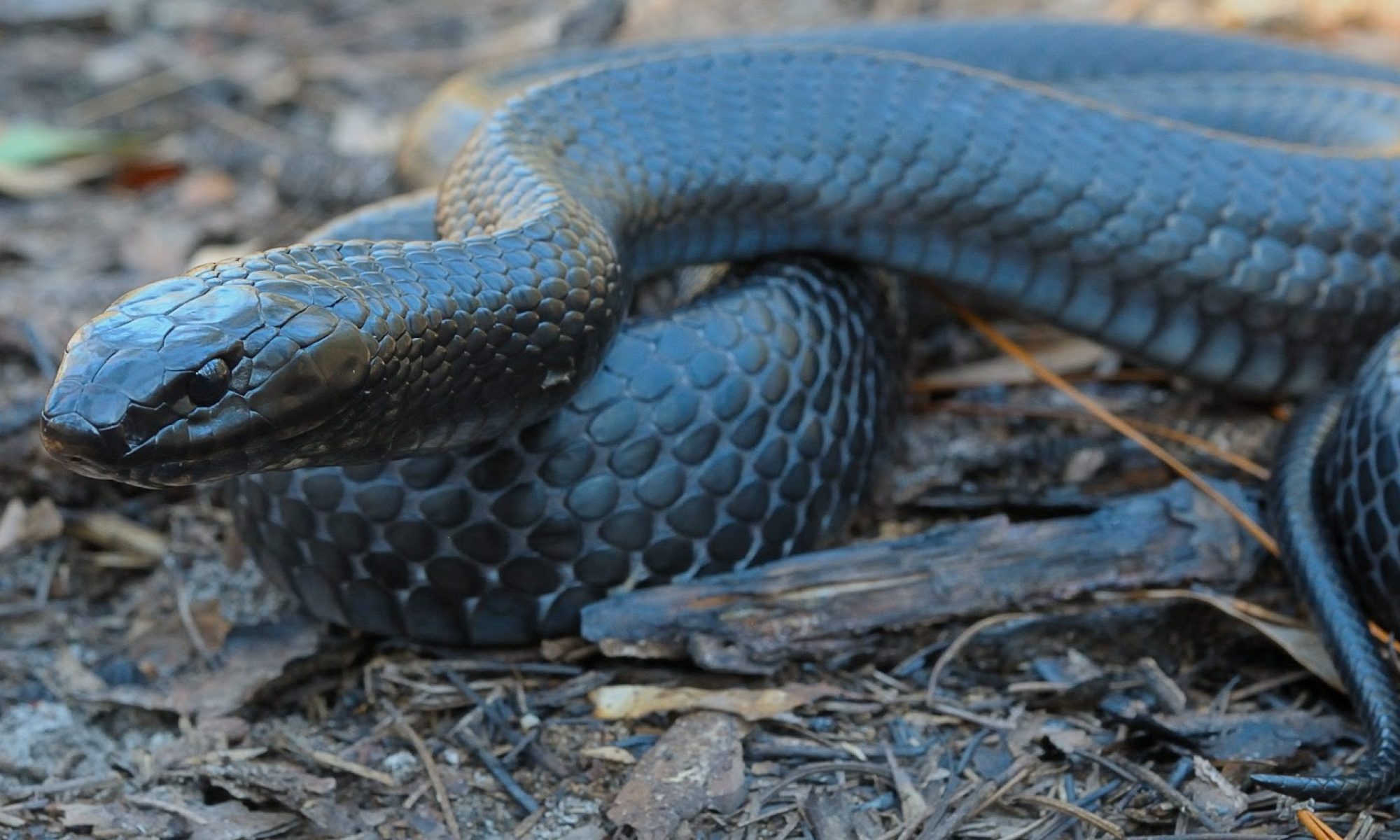The eastern indigo snake was originally described by J.E. Holbrook in 1842 from a specimen collected near the Altamaha River, Wayne County, Georgia (McCranie 1980). Eastern indigo snakes are moderately heavy-bodied and almost entirely iridescent bluish-black in color, belly included; the pigment of the chin and sides of the head may be reddish, orange-brown or cream (Conant and Collins 1998, Stevenson et al. 2008, p.339). The extent and intensity of the pigment is highly variable (Figure 2), lacking on many specimens, and typically most extensive on juveniles and adult males (Layne and Steiner 1996, p.11). The intensity and extent of red-orange pigment may be pronounced on adult male specimens from southern Florida.

Scales are fairly large and smooth, except for sexually mature males which develop faint keels on the dorsal scale rows along the middle of the back (Figure 3) (Layne and Steiner 1984).

Mature adult eastern indigo snakes weigh from 2 pounds to over 10 pounds (1 to 4 kilograms). The eastern indigo snake is the longest species of snake native to the United States and reaches up to 8.6 feet (ft) (2.63 meters (m)) in total length (Conant and Collins 1998, Stevenson et al. 2008, p.339). They exhibit sexual dimorphism in size, with adult males reaching significantly
greater sizes and commonly attaining a total length of 6.5 to 7.0 ft (1.98 to 2.13 m) (Layne and Steiner 1996, Stevenson et al. 2009). Generally, adult females only reach a total length of 4.0 to 6.0 ft (1.22 to 1.83 m) (Layne and Steiner 1996, Stevenson et al. 2009, Knafo et al. 2016).
